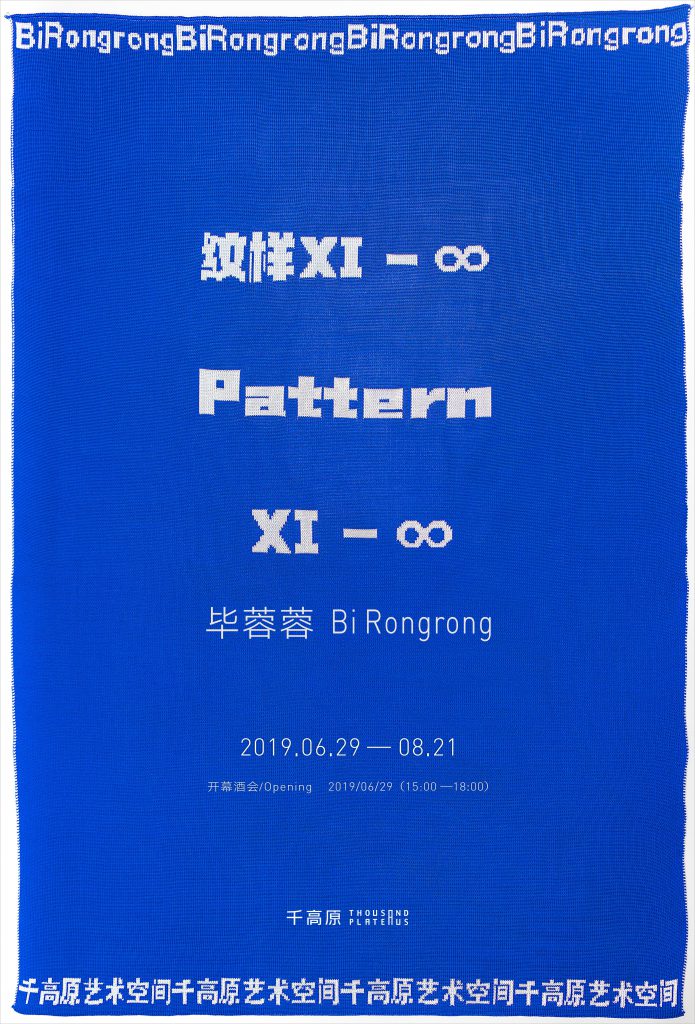
A knitted poster for the exhibition designed by Bi Rongrong
毕蓉蓉为展览设计的针织海报
Solo Exhibition —Pattern XI-∞ | 个展——纹样XI- ∞
2019.6
Originally inspired by posters and graffiti seen on British streets, the artist then furthered her investigation into the patterns spotted on the exterior walls and interior decorations of ancient architecture in European countries and Middle East, as well as on textiles and articles of everyday use. The patterns, on the one hand, could be deemed as “skin” of different cities and cultural entities; and on the other, they are also a kind of fragmented records of the artist’s life trajectory. As an organic whole, they are somewhat “de-centralized”, unpredictable and yet constantly expanding towards an infinite (∞) “collective”. Ultimately, it would result into a map-like, or say “topological”, dynamism, which could cast light on the development of the artist’s aesthetic vision and life experience during the course of time. Currently, no matter where the patterns are from, collectively they demonstrate a kind of “eastern” aesthetic influence on European cultures. Such is both the result of the artist’s own interest and artistic choices as well as a pleasant surprise that is beyond her expectation.
Through manual or digital processing, Bi Rongrong has transformed the patterns she collected into a variety of mix media works including painting, collage, fabrics, video and installation. Not only has the artist projected her comprehension and imagination of the patterns onto the works, but she has also integrated her memory, insights and experience into them. More importantly, the process features a combination of fragmented “cultural skin” and individualized “aesthetic taste”. If “ego” could only exist in its observation, perception and actions on the world, Bi Rongrong’s practice following “patterns” could be seen as a journey of discovery of “ego”, its interplay with the world as well as the poetry and melancholy scattered along the way.
毕蓉蓉作品中的纹样最初来自英国街头的海报,涂鸦,后来扩展到欧洲各国,中东等地的古建筑的外墙或内部装饰,以及纺织品或日用品的装饰纹样。这些纹样既是不同城市以及各种文化实体的“皮肤”,也是艺术家生活轨迹的碎片式记录。它们作为一个整体,是某种“非中心化的”,不可预料的,同时又在不断扩大,最终朝着无限(∞)发展的“集合”,并由此成为一种地图式的,或者说“拓扑化”的动态,随着时间的变化,展示艺术家不断发展的个人美学和生命经验。目前,这些纹样无论来自哪里,它们作为一个整体,都显现出“东方化”的美学对欧洲文化的影响,这是由艺术家本人的点滴兴趣和取舍而来,却又出乎艺术家本人的意料之外。
毕蓉蓉将收集来的纹样经过手工或数码加工,形成包括了绘画,拼贴,织物,影像,装置等各种媒介在内的综合作品集,它们包含了艺术家对纹样的理解与想象,也包含了她对特定回忆或者经历的表现方式。更重要的,创作的过程是碎片化的“文化皮肤”,以及个体化的“美学取舍”之间的结合。如果说“自我”只能存在于“自我”对于世界的观察,感知,和行动当中,那么毕蓉蓉以“纹样”为线索的持续创作,就是艺术家对“自我”,“自我与世界之关系”,以及其中必然存在的诗意与忧郁的发现之旅。
Exhibition at the A Thousand Plateaus Art Space, Chengdu
展览于千高原艺术空间,成都
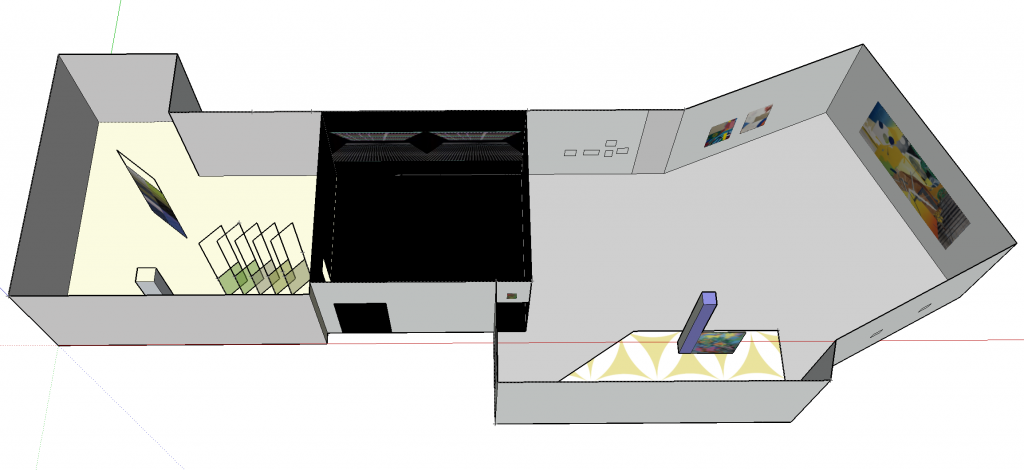
Exhibition View|展览现场


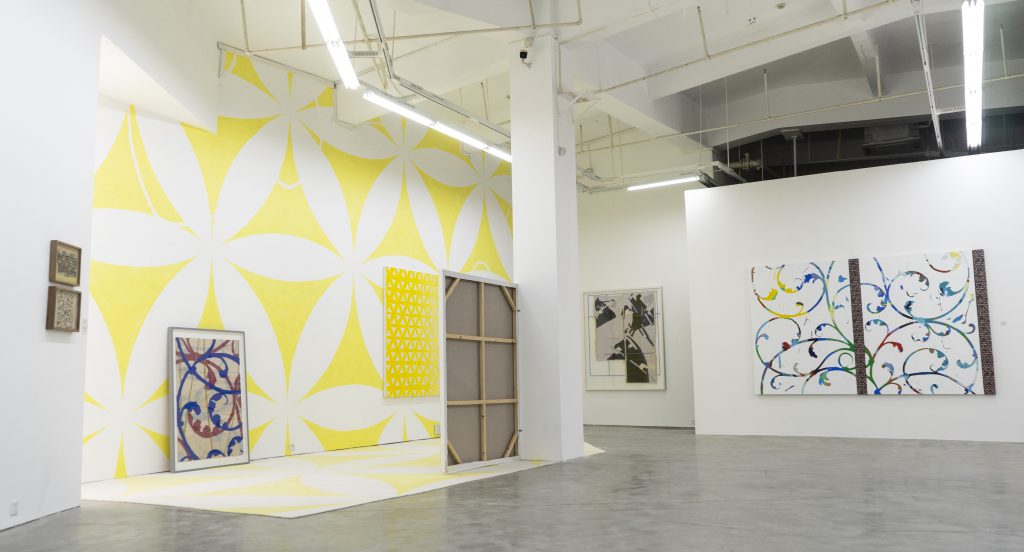
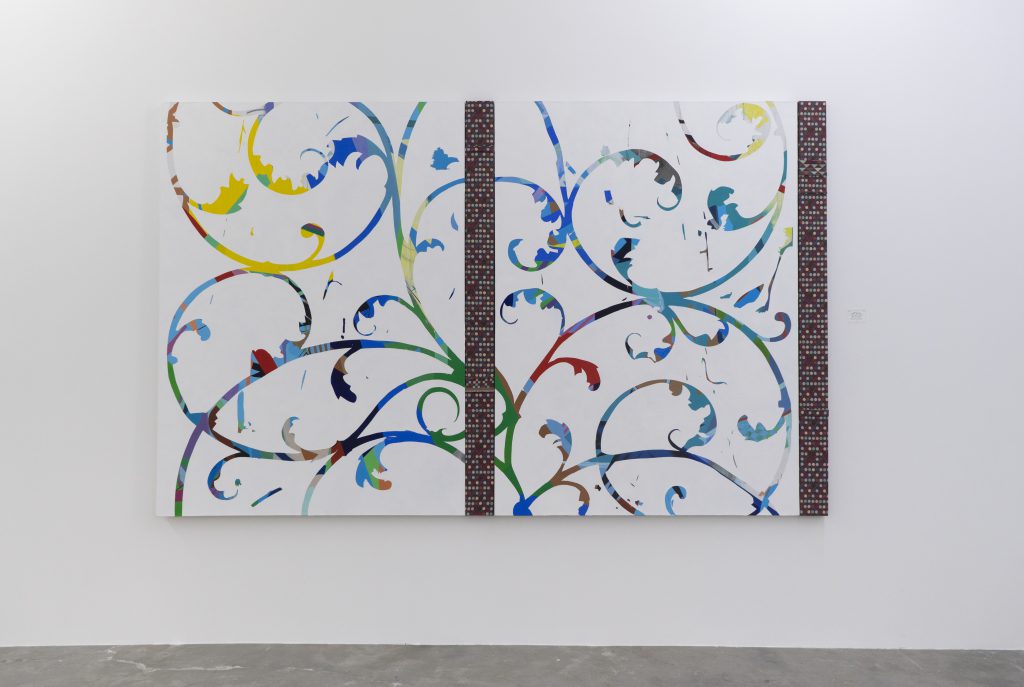



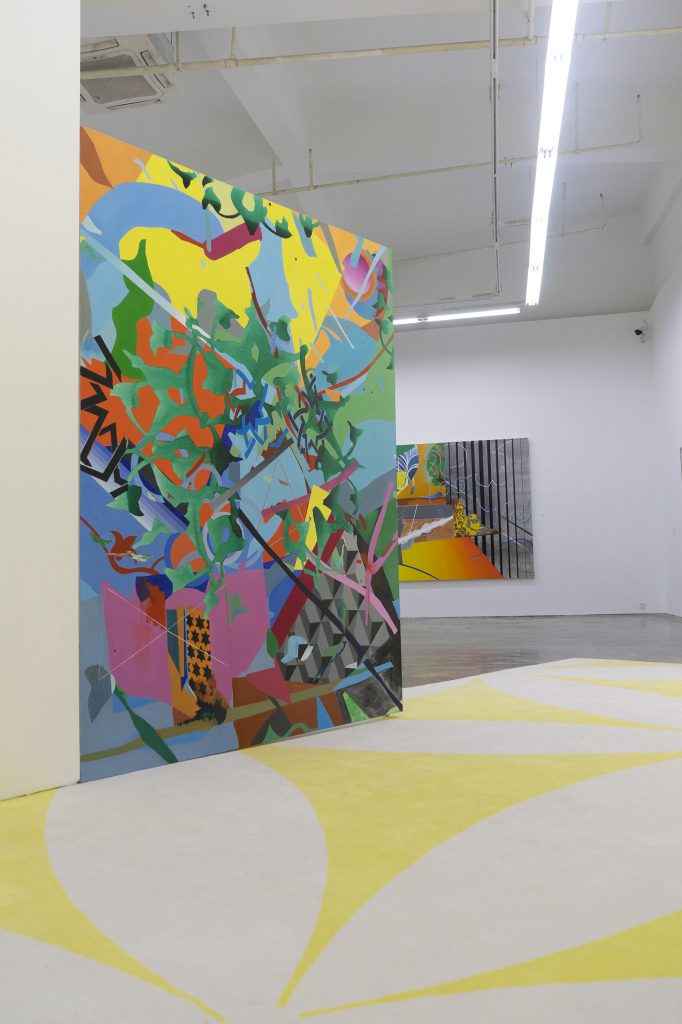
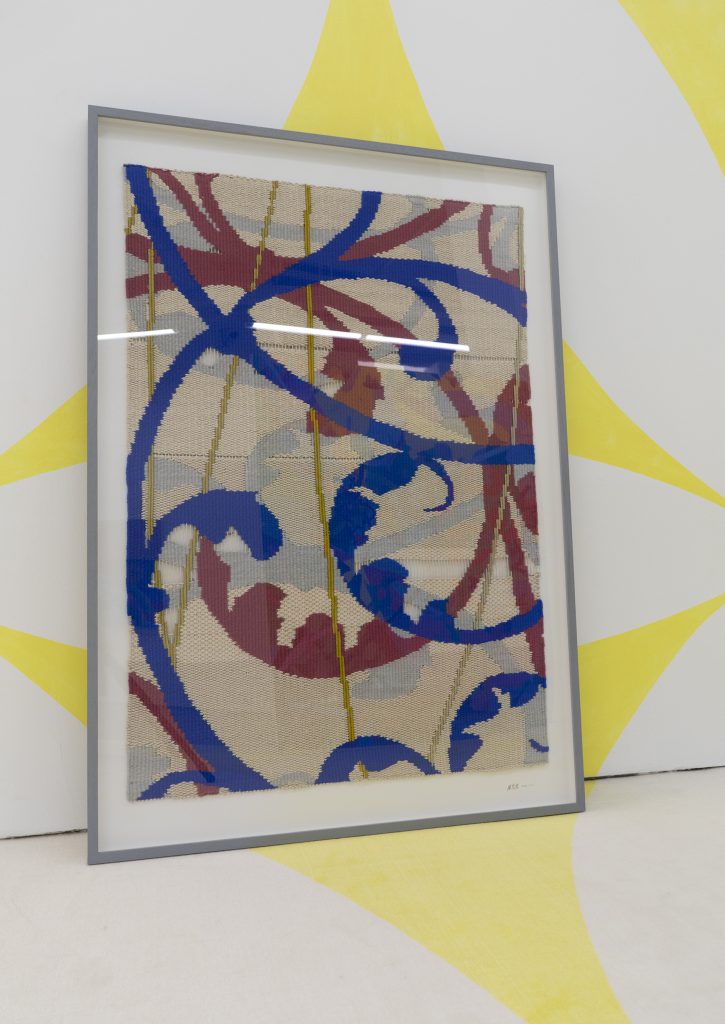

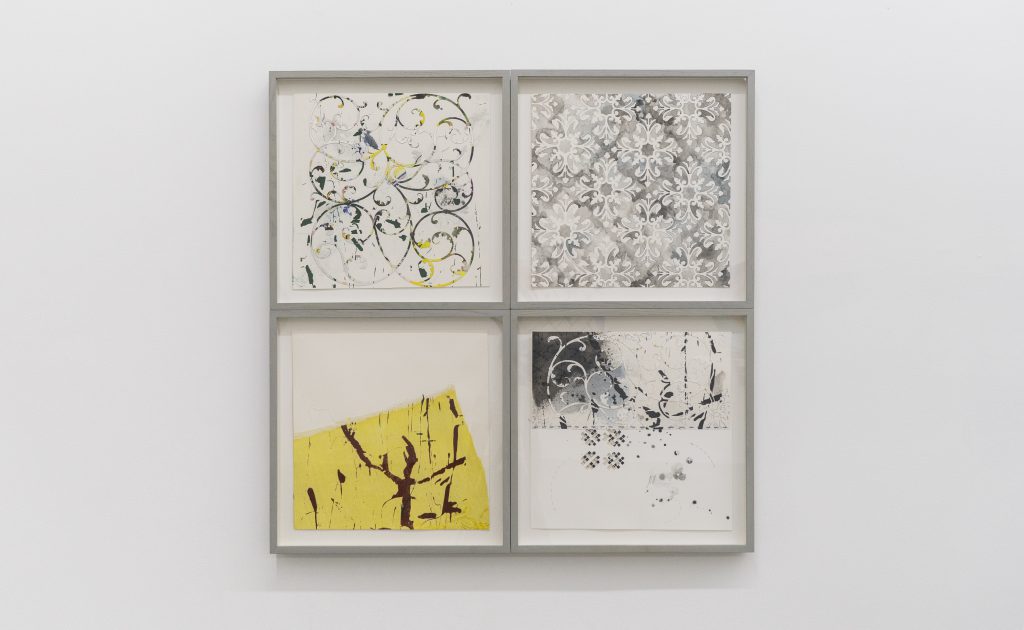


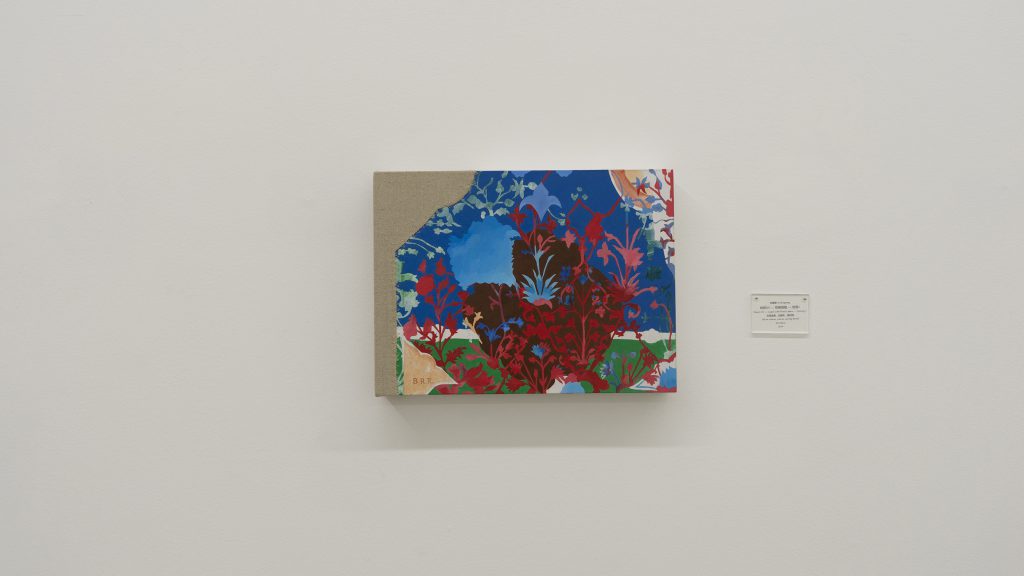
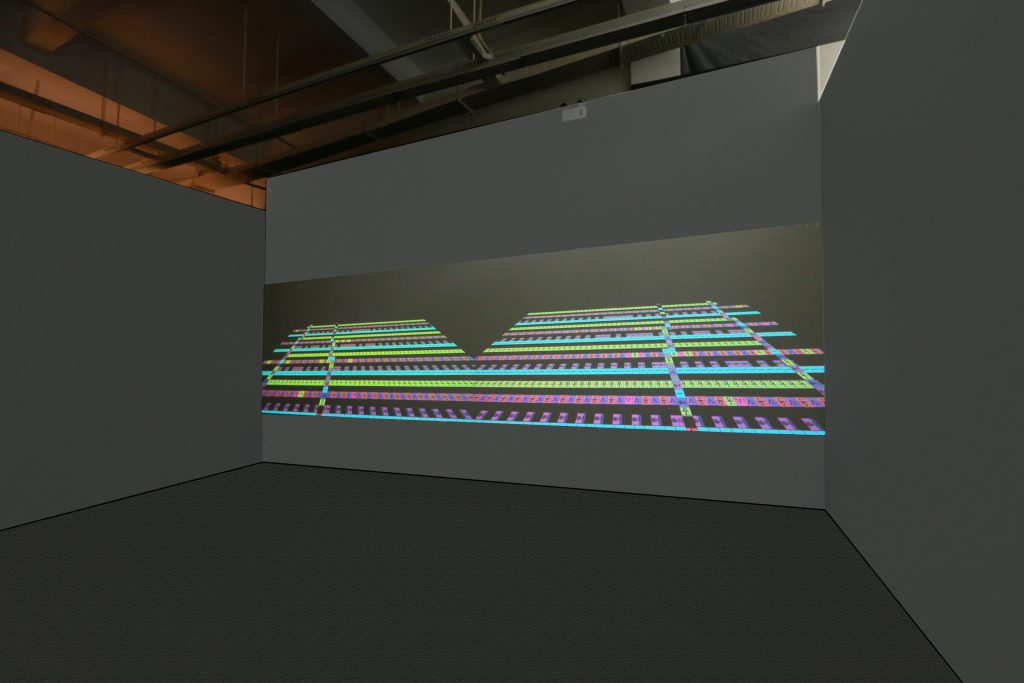
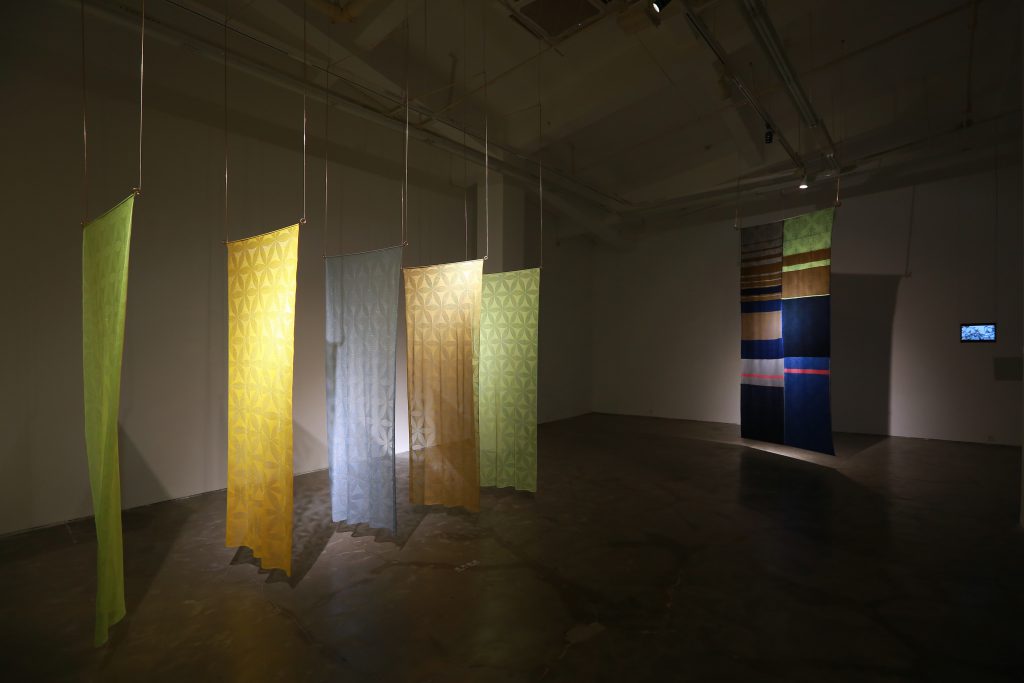
Drawings and paintings
绘画




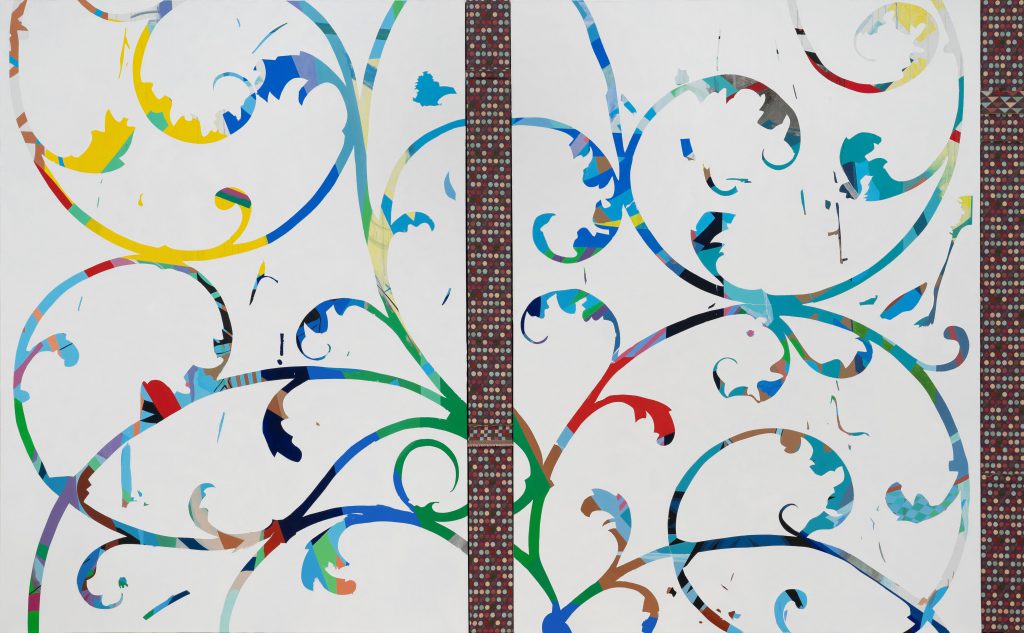
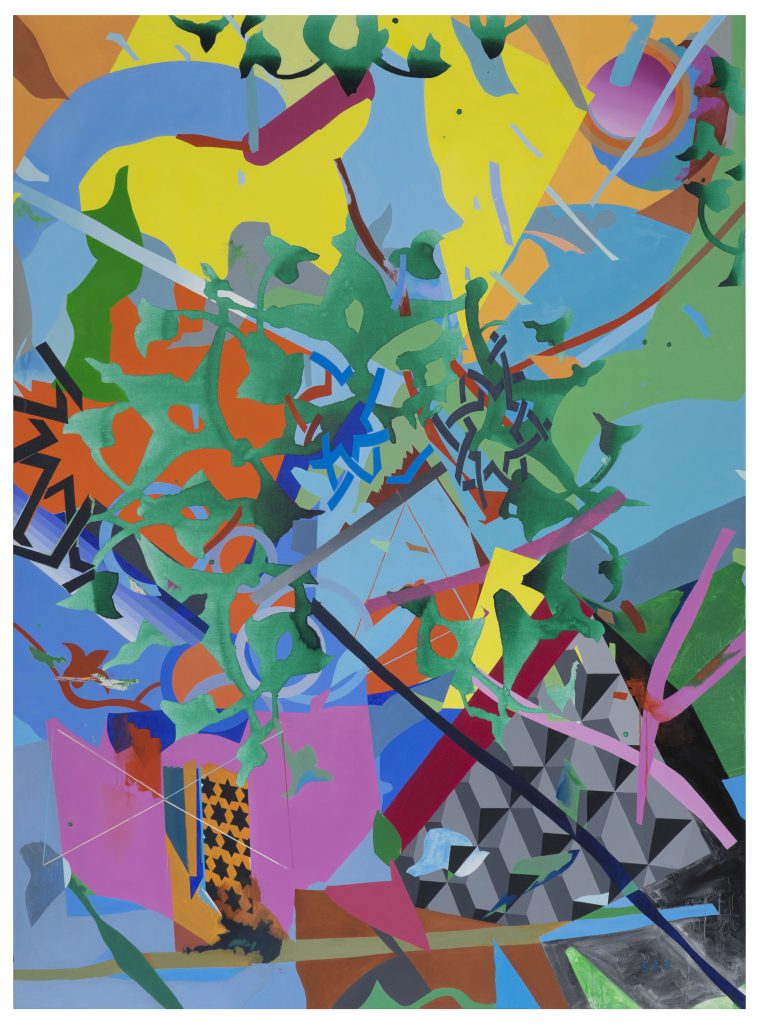
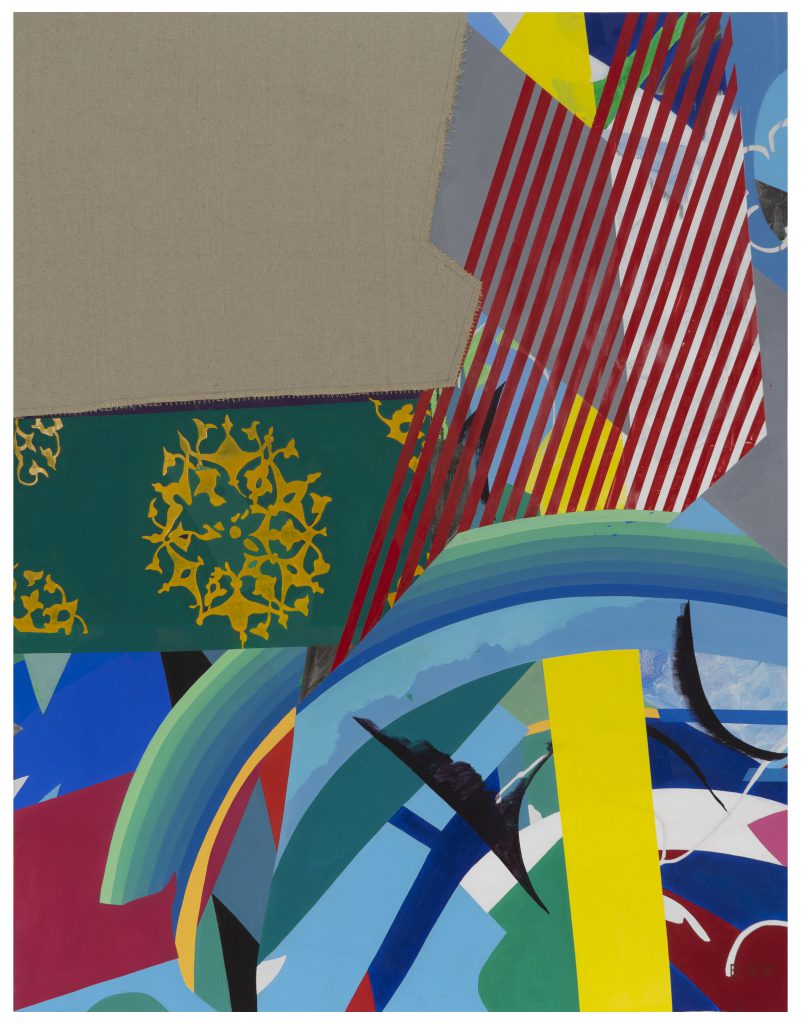
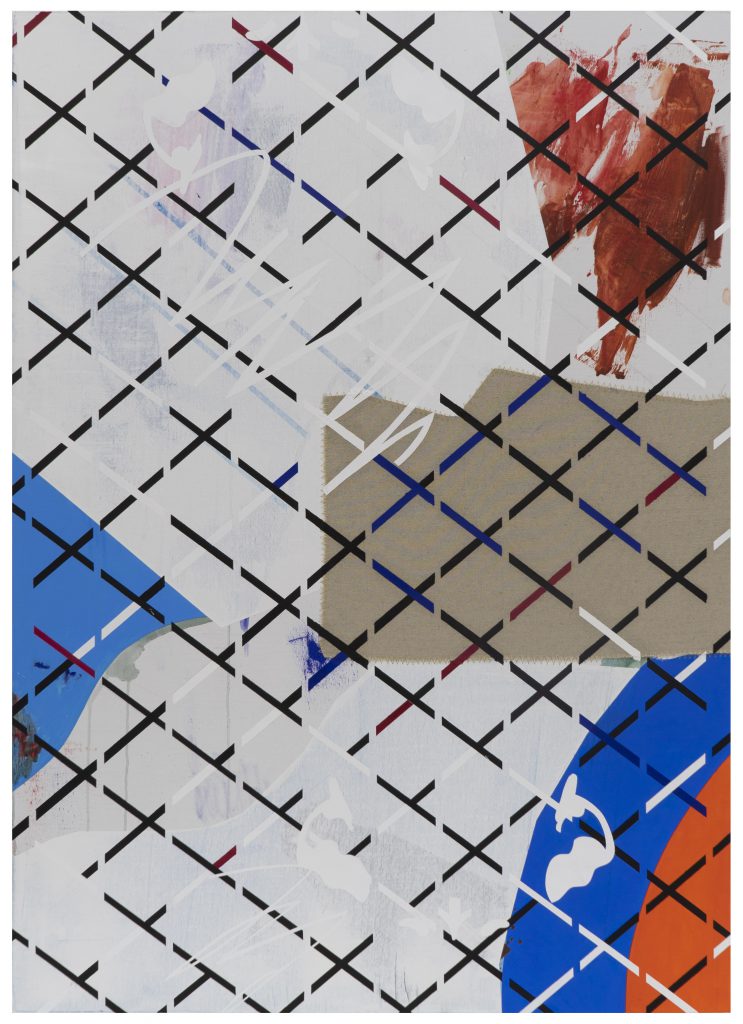
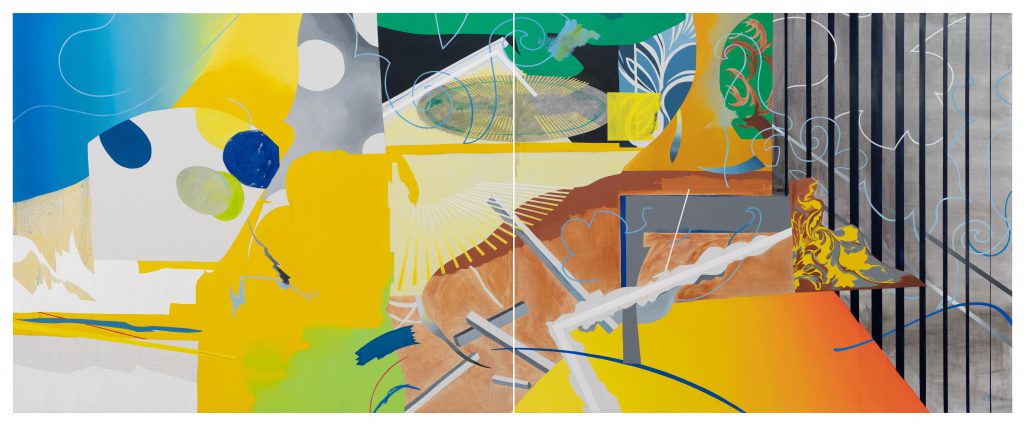
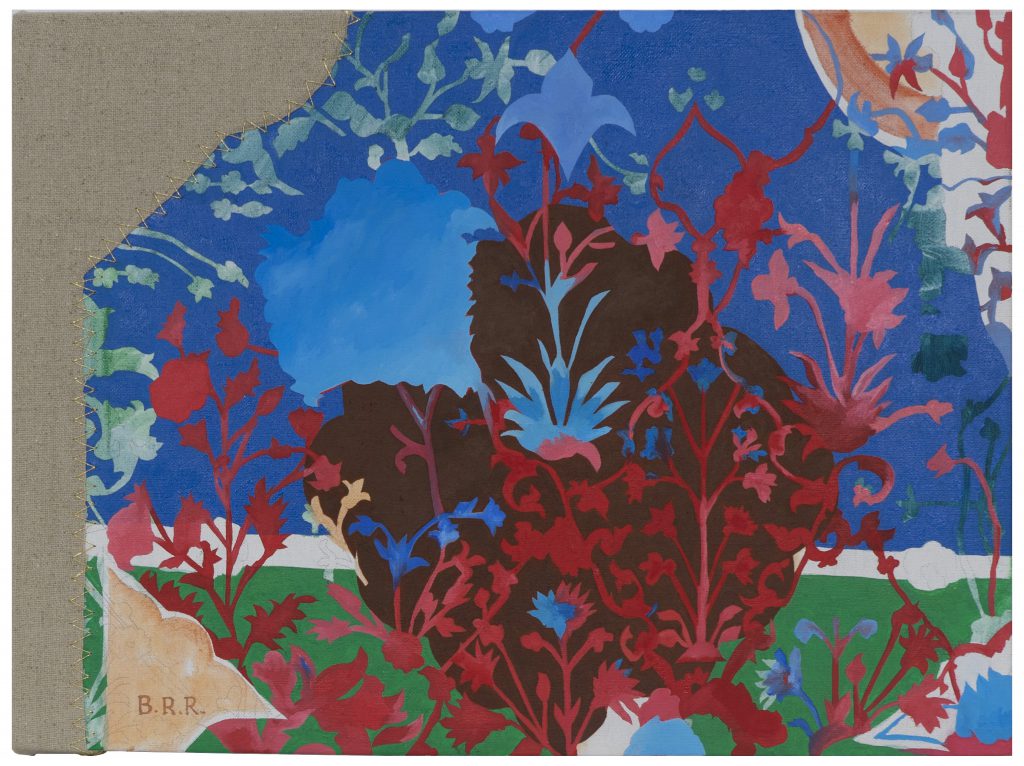
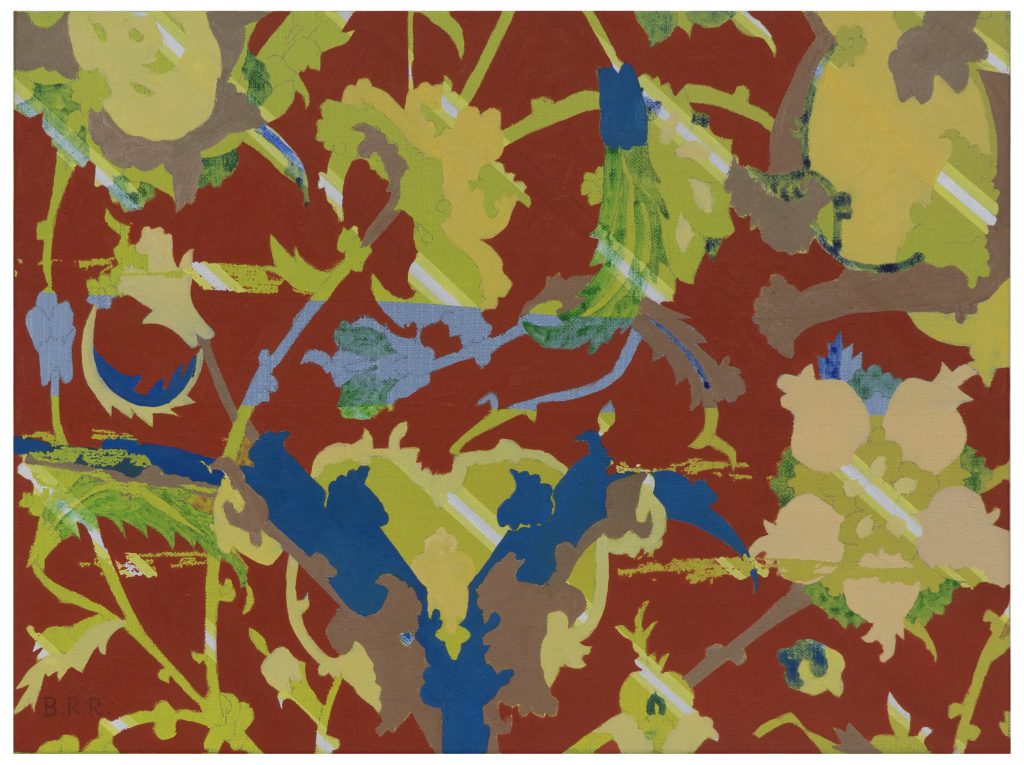
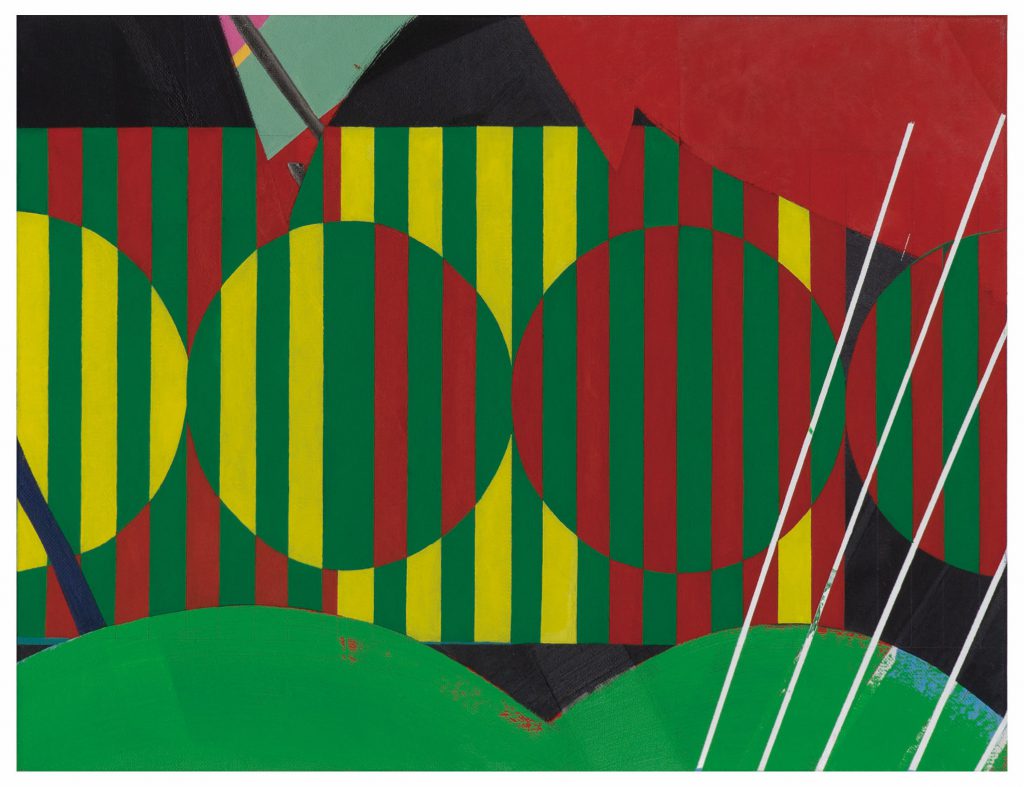
Textiles and some of the details|织物与一些细节
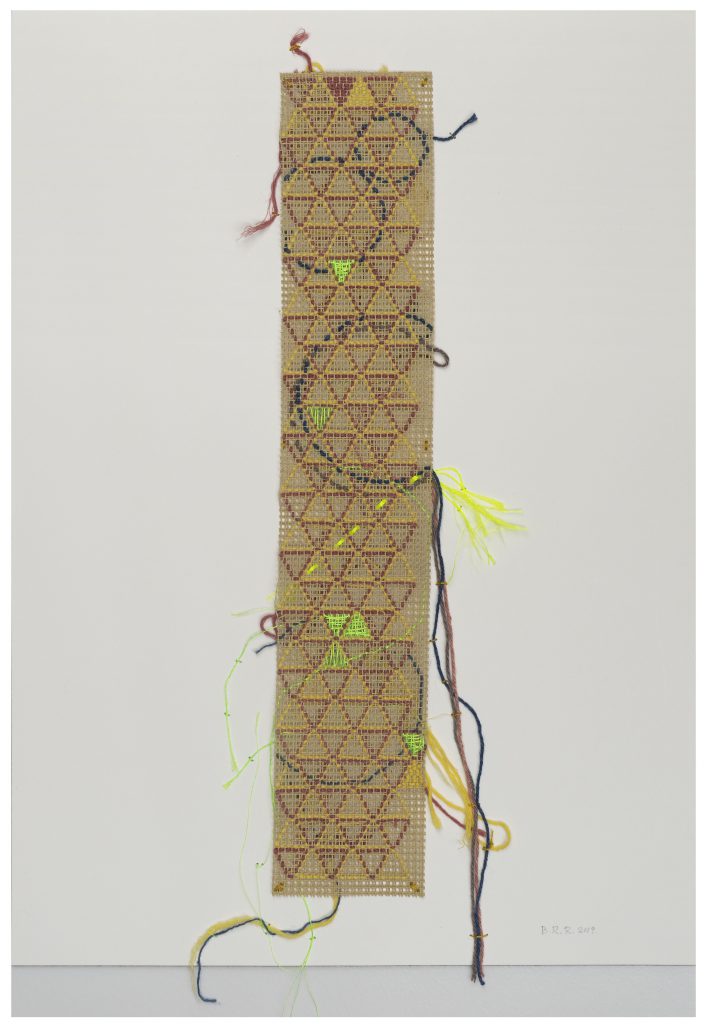
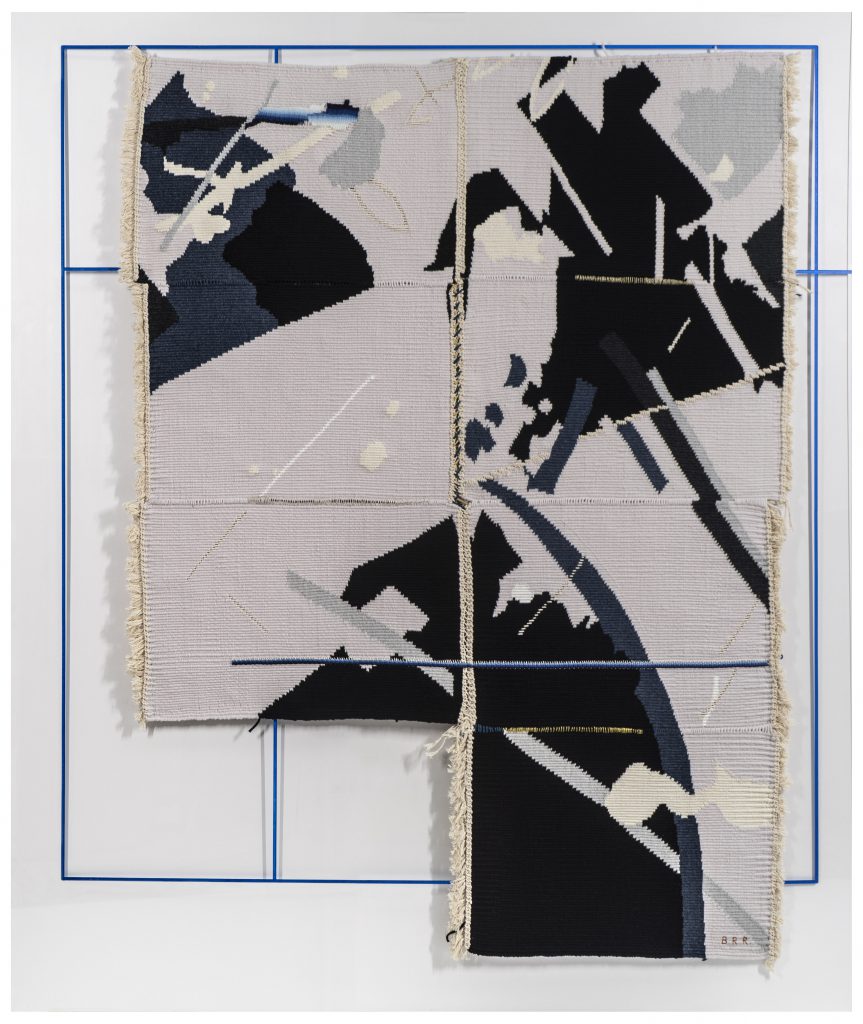
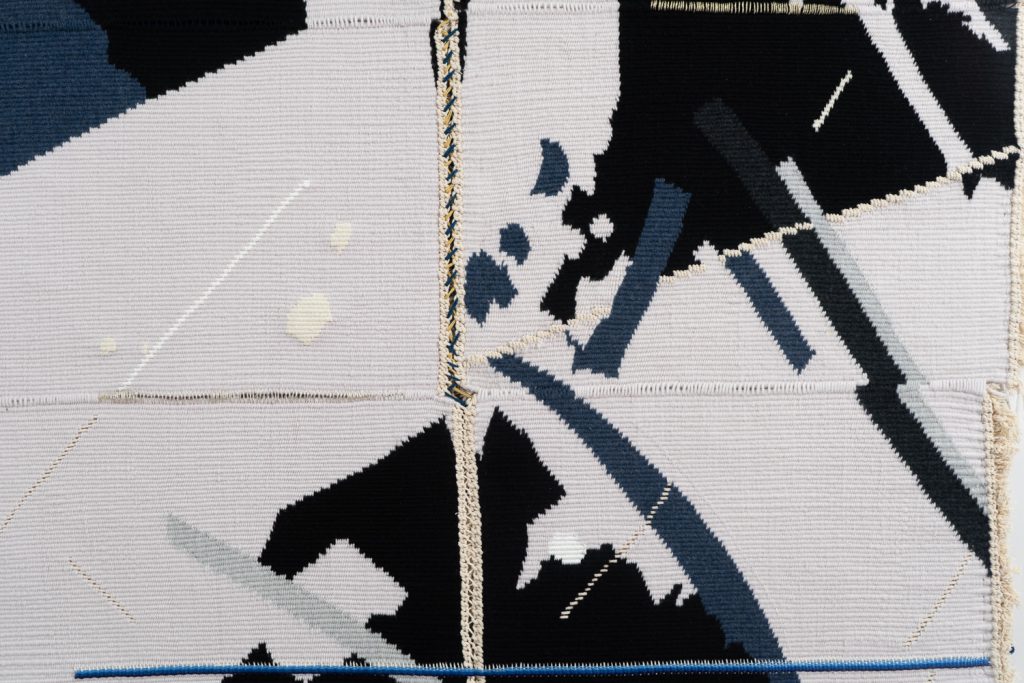

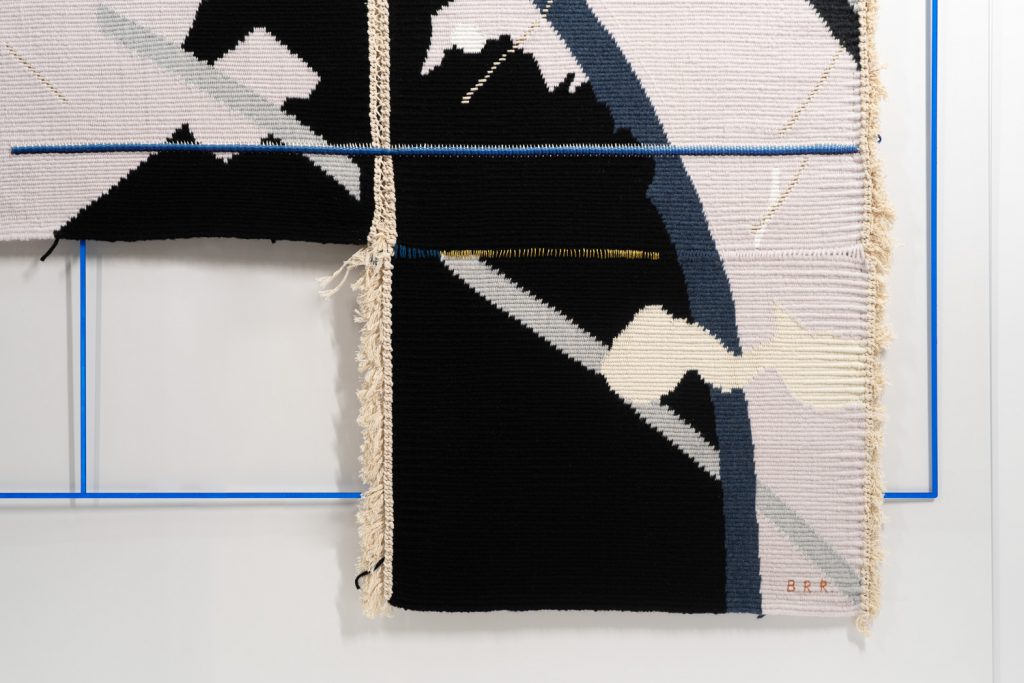
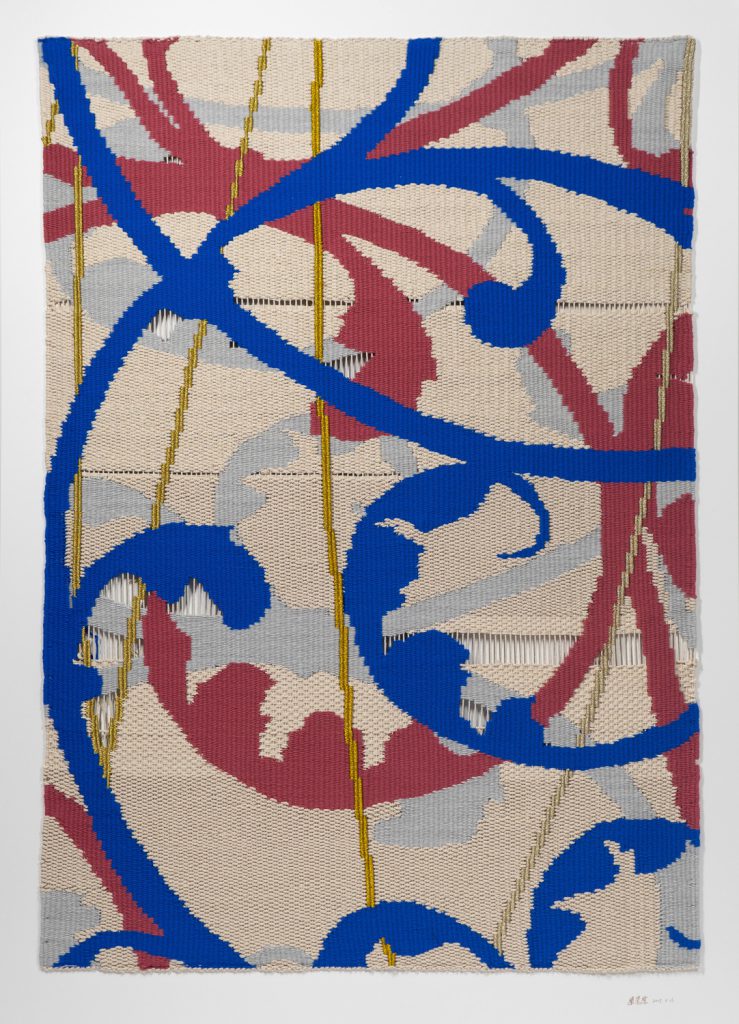
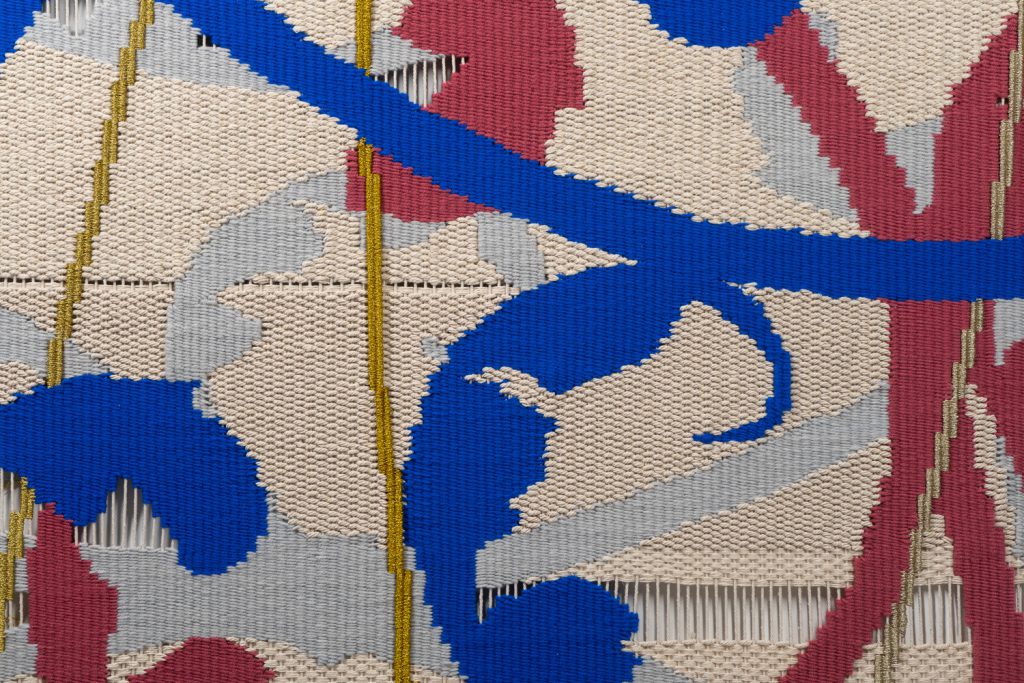
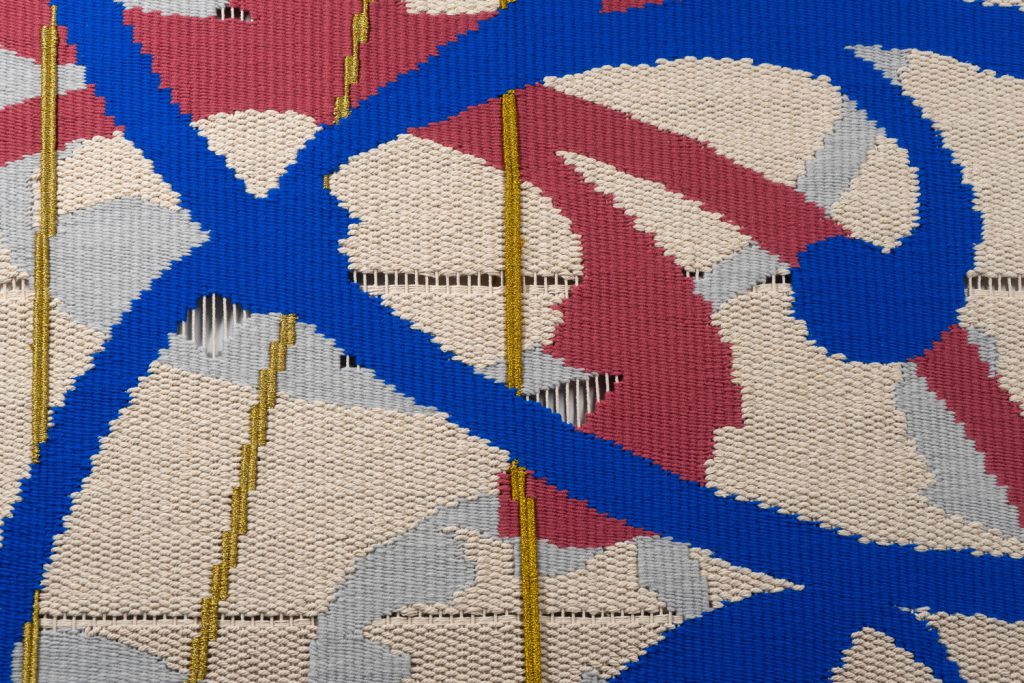
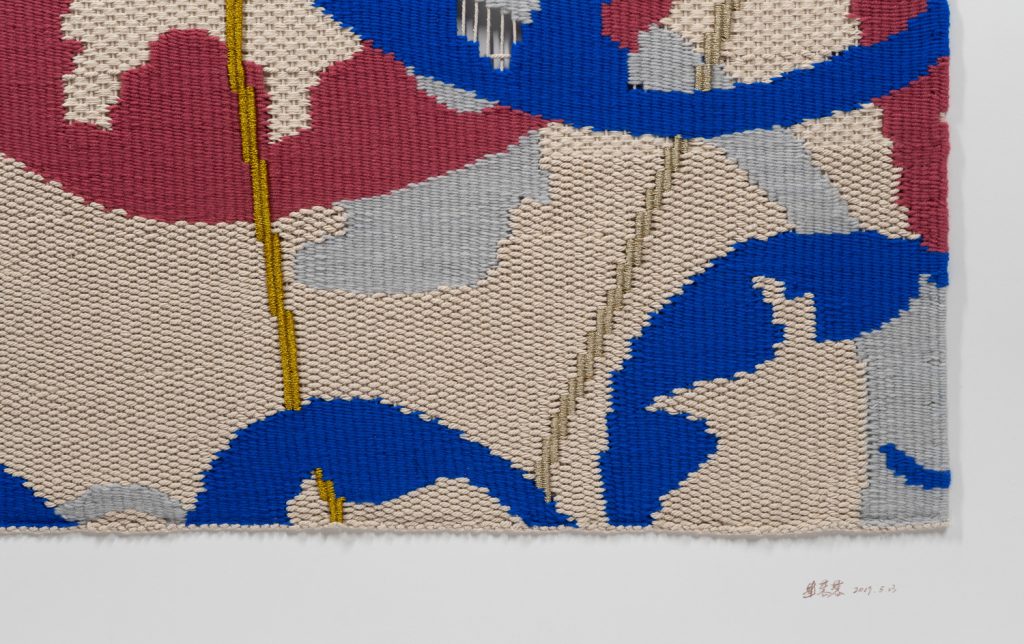
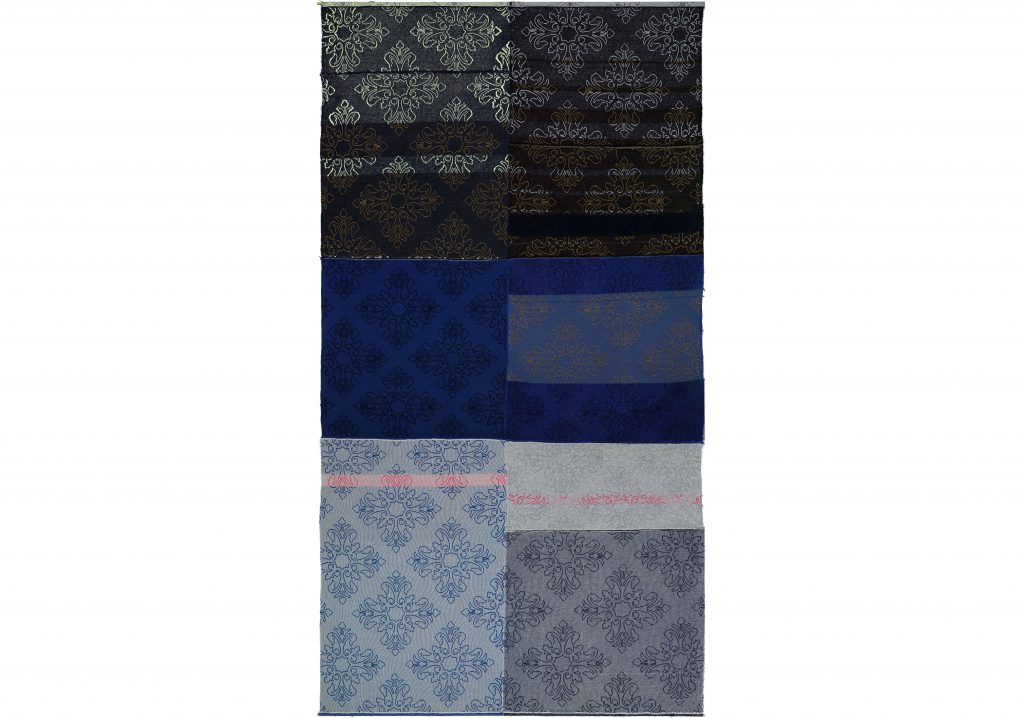
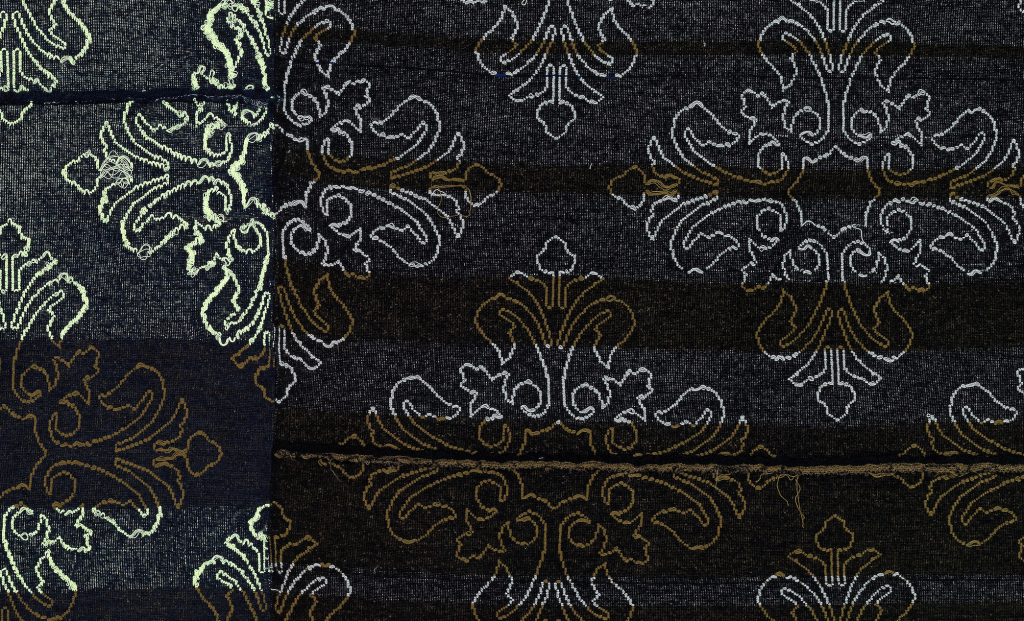
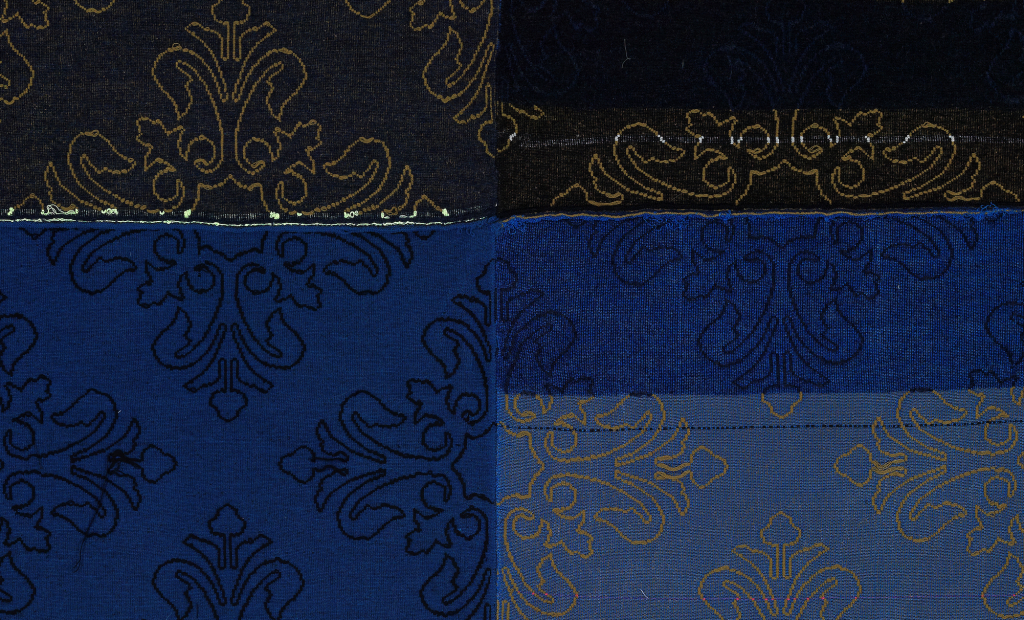
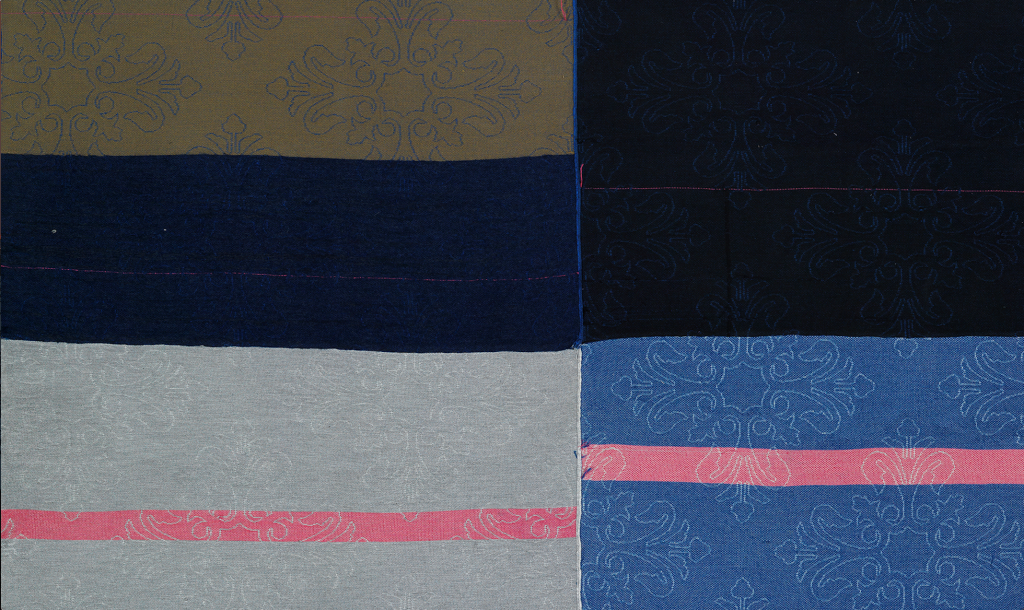
Details of Video work|视频作品的局部
Click to play the video|点击播放